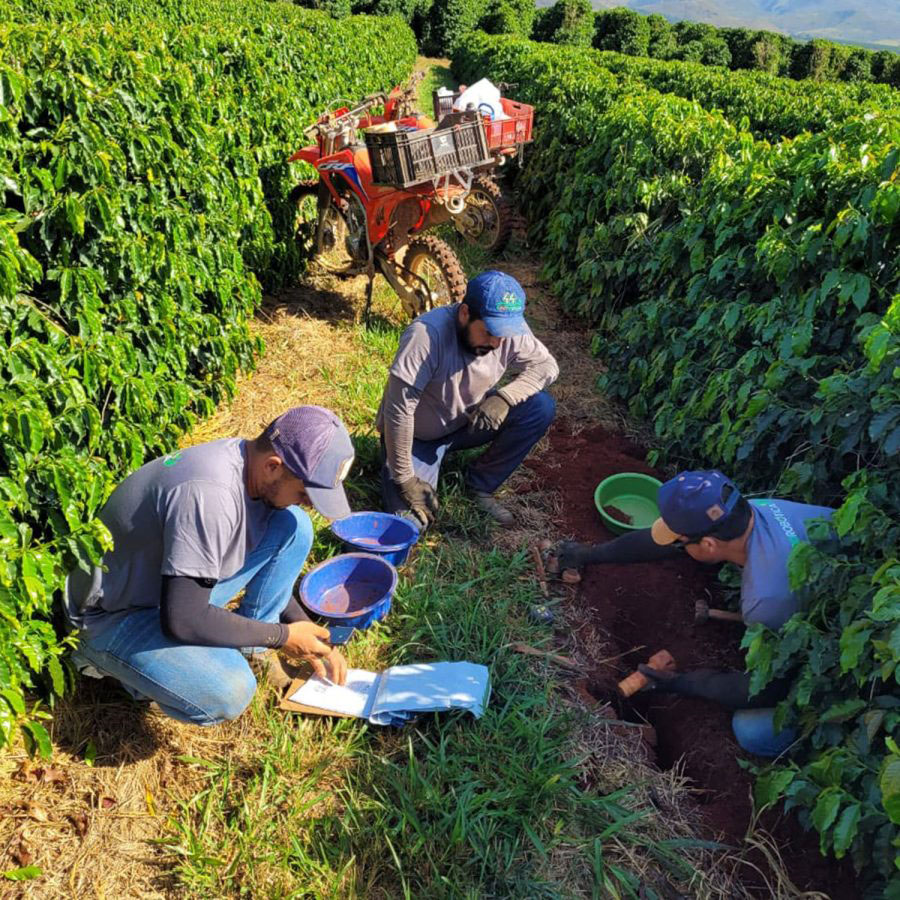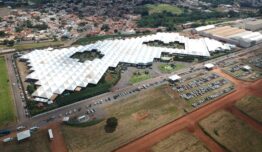
Embrapa’s technology evaluate carbon footprint in the agriculture
Developed alongside Agfintech Agrorobotics, the platform of artificial intelligence (AI) AGLIBS enables international certification
Researchers from Embrapa Instrumentation (SP), in partnership with Agfintech Agrorobotics, developed a new technology. The innovation integrates different software and advanced sensors that allow the digitalization of the soil and of rural activities. The objective is to evaluate carbon footprints for agriculture.
Before anything else, the innovation is called artificial intelligence platform (AI) AGLIBS. It enables access to precise agriculture and the commercialization of carbon credits on the voluntary international market.
Not only that, it allows financially measure, report, verify and commercialize (MRVC) carbon on the agriculture. It also manages soil fertility and nutrition of the plants, for the management of sustainability indicators and rural productivity.
Launch
The Platform’s AGLIBS AI launch happened during Embrapa’s 50 years birthday, celebrated in April 26, in Brasilia (DF).
Nasa Technique
Primordially, the innovation was developed in alignment with scientific criteria accepted internationally and based in the technology LIBS (Laser Induced Breakdown Spectroscopy).
In that sense, it is the same technique that the North American Spatial Agency (NASA) embarked using robots to evaluate the soil of the planet Mars.
Soils
According to Embrapa’s researcher Débora Milori, LIBS is a fast analytical spectrum technique, reproduceable and clean to evaluate carbon in the agriculture. The specialist coordinates the Agrophotonic National Lab (LANAF).
“She uses high energy laser pulses to create a micro plasma on the surface of the sample. And, so, ascertain its chemical composition. Since is a direct analytical technique, it can be applied to a great variety of samples in different physical states of matter.
According to her, on the agriculture, LIBS allow analyze the chemical composition of soils without the necessity of a laborious sample prepare and any generation of chemical residue.
Therefore, the use of LIBS in the agriculture and in the environment is as innovative as it is sustainable.
Increased capacity
Beforehand, the Agrorobotics CEO, Fábio Angelis, informs that the technology does analysis of 22 soil parameters. And that your hardware and software are in patenting phase.
Between the parameters measured are: quantitative and qualitative carbon of the soils, texture (levels of sand, silt and clay), carbon stock in the soil (t/ha). Besides soil density, pH, macro and micronutrients. All in a quick way, economic and precise, without generating chemical residues.
“It’s different from the conventional soil analysis methods that uses different chemical reagents to extract these nutrients from the soil and use more than 10 methods of different measures to obtain the same information that the LIBS measure with a single laser shot”, compare Angelis.
Analysis

Primordially, the new technology is able to analyze more than 1,2 thousand samples of soil daily. While labs that apply traditional methodologies are able to do an average of 800 to 900 samples monthly.
In that sense, during the experimental phase, the AGLIBS AI platform analyzed soil samples involving coffee cultures, soy corn, cotton. In addition of degraded pasture, agriculture-livestock integration systems (ILP), and agriculture-livestock-forest integration systems (ILPF) of 75 small, medium and big rural producers.
And, In total, 600 thousand hectares were mapped, from 17 Brazilian states. Inside this display from the Agrorobotic, it was possible to build a spectral soil bank with more than 300 thousand Brazilian soil spectrums from all its biomes.
How it is going to work
Initially, the company bet in a differentiated model of provision of service to its new technology. The idea is to offer consultancy to rural producers that adhered to the carbon program.
According to Angelis, the services start with sending of the Rural Ambiental Register (CAR) of the property of which all the strategic sampling planning of the project is made.
In other words, this work takes in consideration multiple information to an intelligent representative sampling.
Monetization
In other words, Angelis remembers that the platform is aligned to orientations of the methodology from the international certifier VERRA. That allows the certification of the carbon in the agriculture and soil fertility.
Lastly, the carbon credit will be generated and converted in Verified Carbon Units (VCU). It can be negotiated in the international voluntary market and provide and innovative monetization to the producer.
Carbon in the agriculture
In conclusion, the Agrorobotics CEO estimates that the AGLIBS AI platform will allow to establish economic incentives and market instruments able to repay producers that adopt sustainable production systems.
In the end, he believes that Brazil will be able to open an opportunity to consolidate itself as the biggest world market of carbon credits until 2030. The predicted movement is of more than US$100 billion. This with the technology assisting in the construction of this carbon market in the Brazilian agriculture.
“Besides, the low carbon program inserts the producer into a corporative Governance, Social and Environmental (ESG) politics valorizing the rural commodities”, concludes Angelis.




